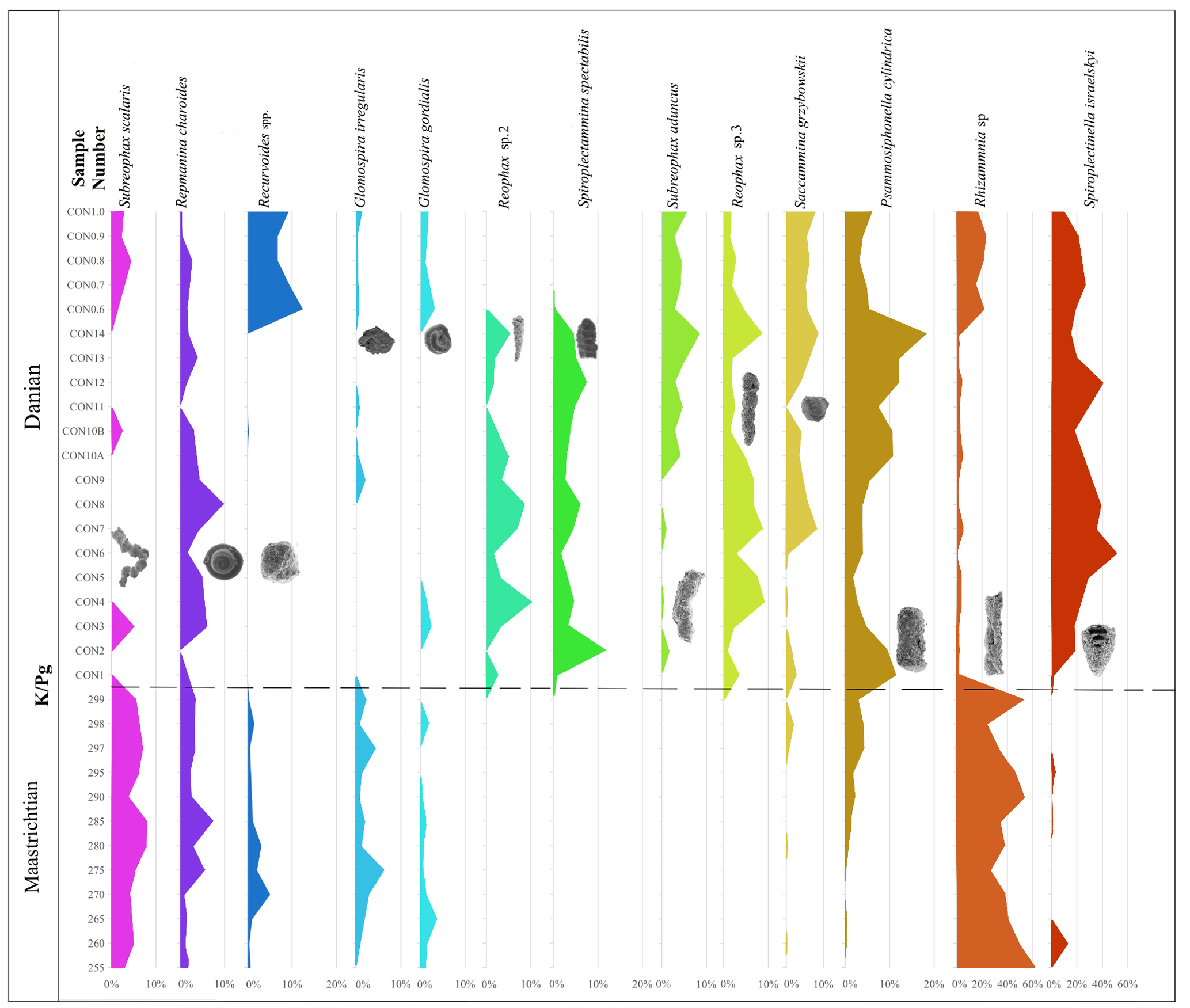LOWER PALEOCENE DEEP-WATER AGGLUTINATED FORAMINIFERA FROM THE CONTESSA HIGHWAY SECTION (UMBRIA-MARCHE BASIN, ITALY): TAXONOMY, STRATIGRAPHIC DISTRIBUTION AND ASSEMBLAGE TURNOVER ACROSS THE CRETACEOUS/PALEOGENE BOUNDARY
DOI:
https://doi.org/10.54103/2039-4942/17115Keywords:
Foraminifera; Biostratigraphy; Cretaceous; Paleogene; Umbria-Marche Basin; ItalyAbstract
Deep-water agglutinated foraminifera (DWAF) are investigated from the lower Paleocene of the Contessa Highway Paleocene (CHP) section in the Umbria-Marche Basin in Italy. In the lowermost part of the Paleocene corresponding to the P0–Pα interval and lowermost P1 planktonic foraminifera zones, a total of 46 species of DWAF are identified. A comparison with the uppermost Maastrichtian DWAF assemblages documented by Cetean (2009) results in a combined total of 94 DWAF species over the Cretaceous/Paleogene boundary interval at Contessa Highway. Of these, 49 species are listed as extinction taxa, nine are survivor taxa, 19 are Lazarus taxa, and 17 taxa display first occurrences in the Paleocene. The record of DWAF in the Contessa Highway Paleocene section displays a moderate decrease in diversity across the K/Pg boundary, followed by a gradual recovery in the first meter of the Paleocene. The lower Paleocene record is characterized by blooms of opportunistic species belonging to the genera Reophax, Subreophax, Repmanina, and Spiroplectinella. The K/Pg boundary interval records a major change in the proportions of DWAF morphogroups, from a suspension-feeding community in the Maastrichtian to one dominated by epifaunal detritivores in the lower Paleocene, reflecting a fundamental change in marine primary productivity following the bolide impact.
Metrics

Downloads
Additional Files
Published
Issue
Section
License
Copyright (c) 2022 SYOUMA HIKMAHTIAR, MICHAEL A. KAMINSKI, CLAUDIA G. CETEAN

This work is licensed under a Creative Commons Attribution-NonCommercial-NoDerivatives 4.0 International License.
The journal allow the author(s) to hold the copyright without restrictions.
Accepted 2022-10-10
Published 2022-11-11






